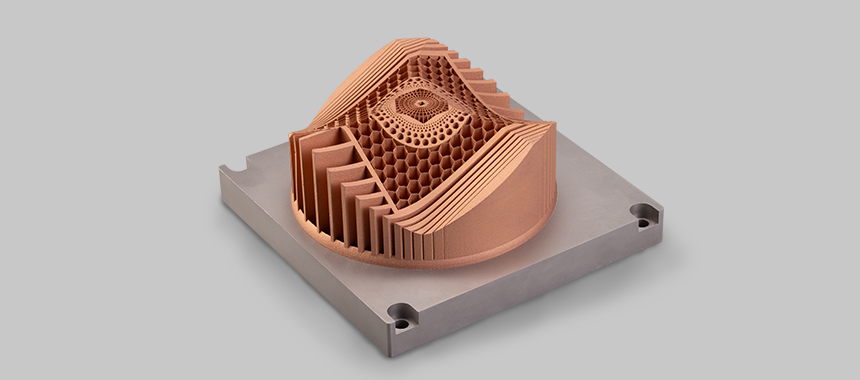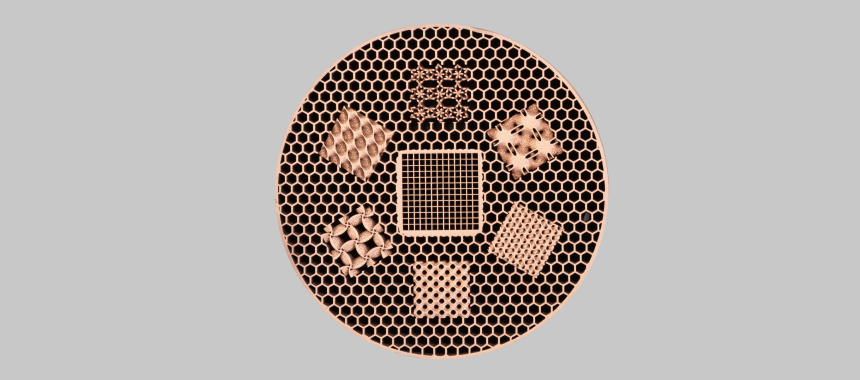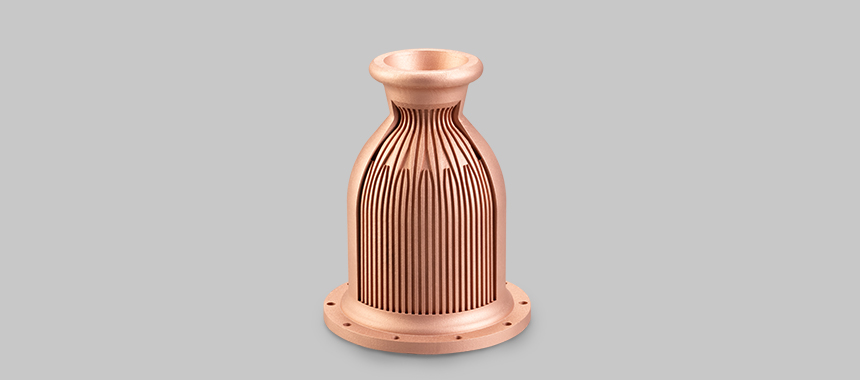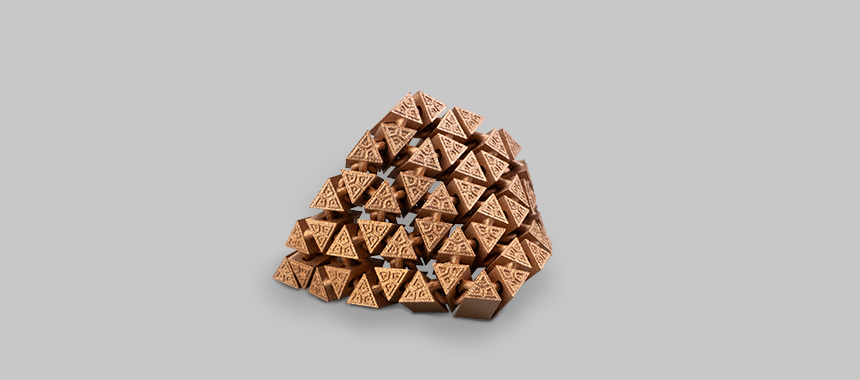Resources
Shanghai Jiao Tong University Research Team Uses ADDIREEN's GL-PBF Device to Achieve High-Quality Pure Copper AM 丨 Relative Density Over 99.9% & IACS Above 98%
Category:Case Study
Area:Scientific Research
Release time:2024-12-05
Last update:2025-08-04
Pure copper and copper alloys possess excellent properties such as high thermal conductivity, high electrical conductivity, and strong corrosion resistance. These properties contribute to their extensive applications across various fields, including aerospace, semiconductor components, new energy vehicles, big data computing device, automotive engineering, jewellery and decoration sector.
Laser powder bed fusion (LPBF), also known as selective laser melting (SLM), enables the high-precision and direct one-step manufacturing of complex metal components. It has rapidly become a mainstream technology in the field of metal additive manufacturing.
Conventional LPBF equipment typically employs infrared lasers as the light source. However, it has been demonstrated that copper, copper alloys, and other highly reflective metals have a markedly low absorption rate for infrared laser. During the interaction between the laser and these materials, most of the laser energy is reflected rather than absorbed, resulting in insufficient material melting and the formation of internal pores and voids. Additionally, the reflected high-power laser often damages the equipment's optical components, thereby making it challenging to maintain stable operation and reducing the system's overall service life. Consequently, conventional LPBF systems encounter significant challenges when printing highly reflective metals, resulting issues such as low part density, reduced printing efficiency, severe spatter, equipment instability, etc.
Copper and copper alloys, as highly reflective metals, have a notably higher absorption rate for green laser than for infrared laser. When using the green laser to melt these materials, a considerable proportion of the laser energy can be effectively absorbed by the materials, thereby allowing for thorough melting, which in return, resulting high-density printed parts. At the same time, due to the high utilization rate of laser energy, the printing efficiency will also be greatly improved. Furthermore, because the energy utilization rate of green laser is high, the amount of laser energy reflected by the materials is reduced, effectively minimizing the spattering during melting, which provides important assurance for the long-term continuous and stable operation of the equipment.
ADDIREEN has developed green laser powder bed fusion (GL-PBF) equipment based on its self-developed high-power single-mode fiber green laser. This pioneering technology provides new opportunities for the additive manufacturing of high-quality copper components. The devices facilitate the additive manufacturing of copper and copper alloys, enhancing both feasibility and efficiency. This innovation also opens up new avenues for the application of highly reflective metal materials.
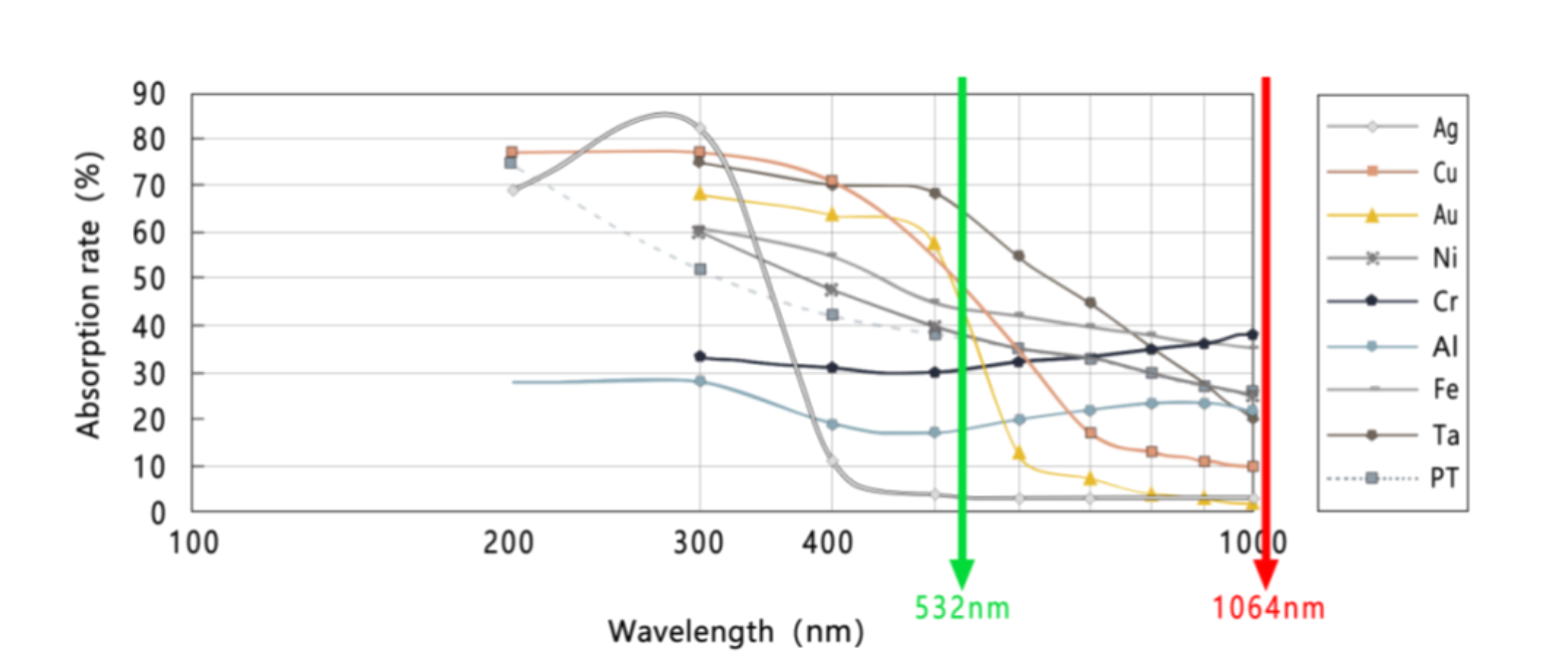
In October 2024, a joint research team from the School of Nuclear Science and Engineering at Shanghai Jiao Tong University and the School of Materials Genome Institute of Shanghai University published a paper in the "Journal of Materials Processing Technology", an international academic journal focusing on materials processing and manufacturing technology, entitled "Enhanced electrical and mechanical properties of additively manufactured pure copper with green laser" (DOI: 10.1016/j.jmatprotec.2024.118615). The objective of this study is to address the issue of high reflection in pure copper through the use of green laser powder bed fusion (GL-PBF) technology. It also examines the key characteristics of copper components, including relative density, surface roughness, mechanical properties, and electrical conductivity. This research aims to fill the gap in the optimization of GL-PBF process parameters for pure copper, providing a framework for laser additive manufacturing of highly reflective metal materials. Moreover, the study demonstrates the exceptional application capabilities of ADDIREEN's green laser metal 3D printing equipment in scientific research, further validating the outstanding performance of GL-PBF technology in the additive manufacturing of copper materials.
In the experiment, the research team used ADDIREEN's XH-M160G green laser (λ = 532 nm) equipment to print pure copper powder. The alignment of the green laser wavelength (approximately 532 nm) with the reflective properties of copper enables the material to absorb laser energy more effectively, resulting in greater melting efficiency and higher uniformity of heat distribution. This contributes to enhanced physical properties of the final product, meeting the requirements of a broader range of applications. The XH-M160G equipment, which features a 500W single-mode continuous fiber laser, has an average spot diameter of 30 μm, and the absorption rate of copper powder is approximately 85%. In this study, the research team fixed the hatch spacing and adjusted parameters such as scanning speed and laser power to observe variations in the microstructure, mechanical properties, and electrical performance of the experimental samples under different conditions. These allow for a systematic exploration of the effects of these factors on material properties.
This study is concerned with the investigation of GL-PBF technology, with a particular focus on the impact of process parameters on the performance of copper components during the manufacturing process. It reveals the critical role these parameters play in the densification, microstructure, surface roughness, mechanical properties, and electrical conductivity of pure copper samples. The results indicate that by optimizing GL-PBF parameters, copper components with a relative density exceeding 99.9% and an electrical conductivity reaching 98% of the International Annealed Copper Standard (IACS) can be achieved. This finding serves to further validate the tremendous potential of green laser technology in the field of additive manufacturing. Additionally, the study combines experimental work with finite element analysis modeling to explore the impact of defect morphology on the electrical conductivity of printed materials. Based on the relationship between electrical conductivity and porosity, several models are proposed, providing new insights into how to control these defects during the additive manufacturing process.
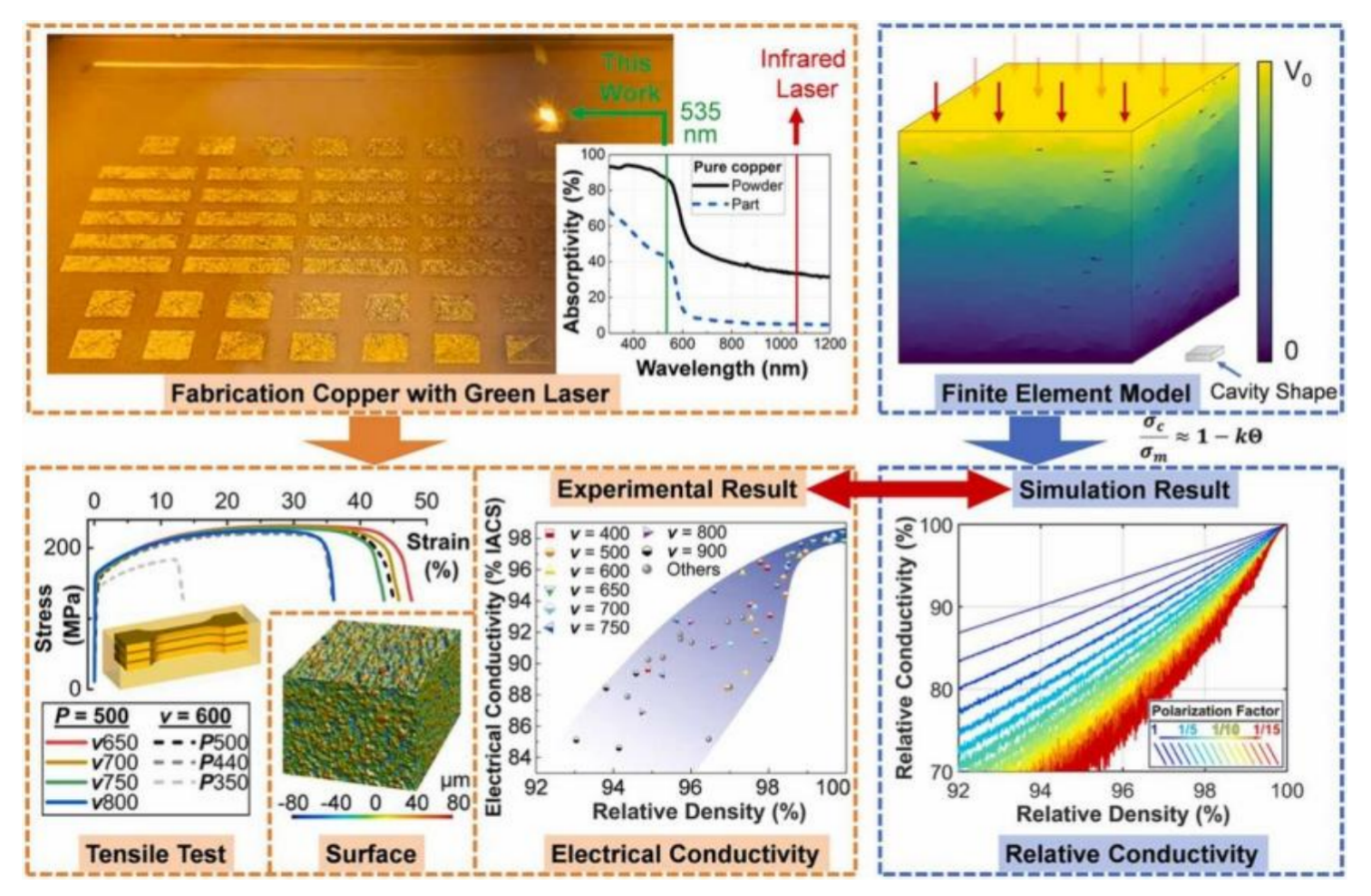
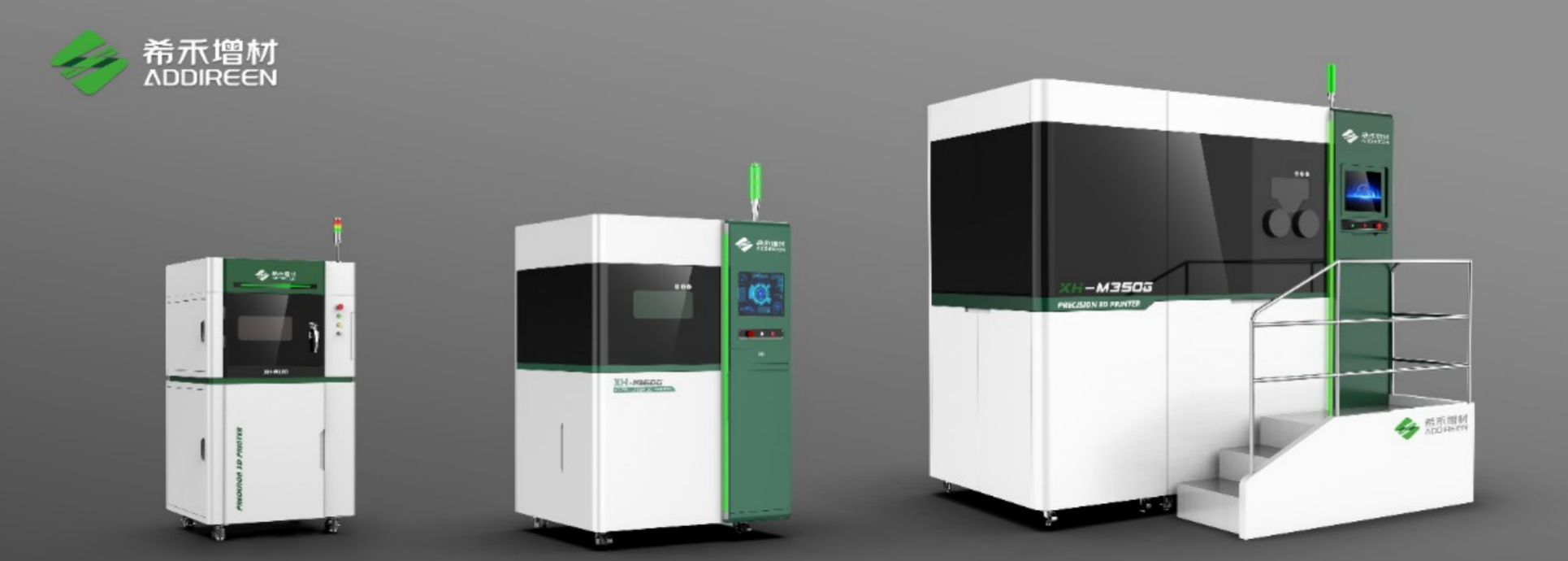
Green laser powder bed fusion (GL-PBF) technology not only enables the efficient and high-quality printing of pure copper and copper-based materials, but also provides a novel solution for the additive manufacturing of other highly reflective and refractory metals (such as gold, platinum, silver, tantalum, and tungsten). Furthermore, it offers a new approach for more efficient and precise printing of common metal materials.
ADDIREEN is the pioneer of green laser 3D printing solutions in China, specializing in the research, development, and manufacturing of equipment for the additive manufacturing of highly reflective metals. The equipment utilizes a self-developed 500-1000W high-power single-mode continuous green fiber laser, offering significant advantages such as high beam quality, stability, and a finer laser spot. Compared with conventional LPBF equipment, GL-PBF equipment of ADDIREEN has the advantages of higher forming efficiency, better forming quality, higher printing resolution, and broader process window in the field of additive manufacturing of pure copper, copper alloy, gold, and platinum materials.
ADDIREEN has successfully launched a range of green laser metal 3D printing machines (M160G, M350G, M100G, etc.), which have been widely adopted by several leading industries, including aerospace, new energy vehicles, induction heating coils, and high-speed communication devices. The pure copper components produced by these systems achieve a thermal conductivity of up to 390 W/m·K. The printed liquid cold heat sink and heat exchanger components can withstand water pressures greater than 8 MPa at a wall thickness of 0.5 mm, while the printed TPMS structure has a minimum wall thickness of 0.08 mm.
Going forward, ADDIREEN will continue to develop cutting-edge green laser 3D printing solutions and strive to promote the innovative applications of GL-PBF technology across various industries, contributing to the sustainable development of global high-end manufacturing.
Related materials (other grades)

I agree to receive industry news, product and service promotions, and all other relevant Addireen communications.
Contact Us
Shenzhen Addireen Technologies Co., Ltd.
Building 7, Detai Technology Park, Dalang Street, Longhua District, Shenzhen, Guangdong, China.
(+86) 193-5719-8013
info@addireen.com
